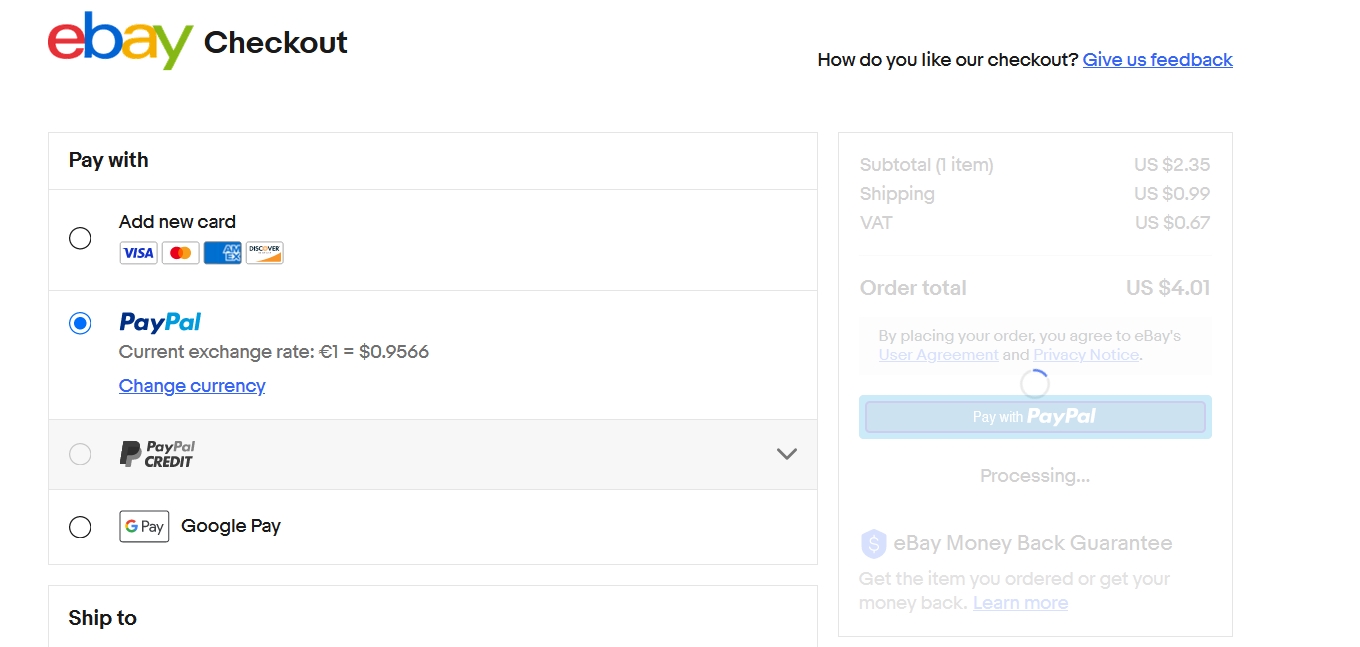Home>Finance>How To Add Merchant Fraud Protection To A Website


Finance
How To Add Merchant Fraud Protection To A Website
Published: February 19, 2024
Learn how to enhance your website's security with merchant fraud protection. Safeguard your finance-related transactions and customer data today.
(Many of the links in this article redirect to a specific reviewed product. Your purchase of these products through affiliate links helps to generate commission for LiveWell, at no extra cost. Learn more)
Table of Contents
**
Introduction
**
In today's digital age, e-commerce has revolutionized the way businesses operate, allowing them to reach a global customer base with unprecedented ease. However, along with the numerous benefits of online transactions comes the looming threat of merchant fraud. This nefarious activity can wreak havoc on businesses, leading to financial losses, damaged reputations, and eroded customer trust. As such, it is imperative for online merchants to prioritize the implementation of robust fraud protection measures to safeguard their operations and clientele.
Merchant fraud encompasses a wide array of deceptive practices, including unauthorized transactions, identity theft, and chargeback fraud. These illicit activities can inflict severe harm on businesses of all sizes, making it crucial for merchants to be vigilant and proactive in their approach to fraud prevention. By gaining a comprehensive understanding of merchant fraud and the steps necessary to combat it, online businesses can fortify their defenses and instill confidence in their customers.
As we delve into the intricacies of merchant fraud protection, it is essential to recognize the gravity of this issue and the far-reaching implications it holds for businesses and consumers alike. With the right strategies and tools in place, merchants can mitigate the risks associated with online transactions and foster a secure and trustworthy e-commerce environment.
**
Understanding Merchant Fraud
**
Merchant fraud encompasses a spectrum of deceptive practices orchestrated by individuals or groups with the intent to exploit online businesses for financial gain. This nefarious activity can manifest in various forms, including identity theft, account takeover, friendly fraud, and triangulation fraud, among others.
Identity theft, a prevalent form of merchant fraud, involves the unauthorized use of an individual’s personal information to conduct fraudulent transactions. This can result in severe financial repercussions for both the affected consumers and the targeted businesses. Account takeover occurs when fraudsters illicitly gain access to a customer’s account, enabling them to make unauthorized purchases and potentially compromise sensitive data.
Friendly fraud, despite its seemingly innocuous name, poses a significant threat to merchants. This type of fraud occurs when a customer falsely claims that they did not authorize a legitimate transaction, leading to chargebacks and financial losses for the merchant. Triangulation fraud involves a three-party scheme, wherein a fraudster utilizes a compromised account to place orders on behalf of unsuspecting customers, ultimately defrauding both the customers and the targeted business.
Understanding the multifaceted nature of merchant fraud is paramount for merchants seeking to fortify their defenses. By recognizing the various forms and tactics employed by fraudsters, businesses can implement targeted prevention measures to mitigate the risks associated with online transactions.
Moreover, the evolving landscape of e-commerce and digital payments necessitates a proactive stance in combating merchant fraud. As technology advances and consumer behavior shifts, fraudsters adapt their methods to exploit vulnerabilities in online payment systems. Therefore, merchants must remain vigilant and continuously update their fraud prevention strategies to stay ahead of malicious actors.
By gaining a comprehensive understanding of the intricacies of merchant fraud, businesses can proactively safeguard their operations and uphold the trust of their customers, fostering a secure and resilient e-commerce ecosystem.
**
Importance of Merchant Fraud Protection
**
The importance of robust merchant fraud protection cannot be overstated in today’s digital landscape. For online businesses, the ramifications of falling victim to fraudulent activities can be dire, encompassing financial losses, damage to reputation, and erosion of customer trust.
Financial Implications: Merchant fraud can inflict significant financial harm on businesses, ranging from chargeback fees and lost revenue to potential legal expenses. The impact of fraudulent transactions can reverberate throughout an organization, impeding growth and profitability.
Reputation Management: A single instance of fraud can tarnish a business’s reputation, leading to a loss of consumer confidence and brand credibility. In the interconnected realm of e-commerce, negative publicity stemming from fraud incidents can have far-reaching consequences, deterring potential customers and undermining existing relationships.
Customer Trust: Trust forms the bedrock of successful e-commerce ventures. Instances of fraud not only jeopardize the trust of affected customers but also send ripples of apprehension throughout the broader consumer base. By prioritizing robust fraud protection measures, merchants can demonstrate their commitment to safeguarding customer interests and fostering a secure online environment.
Legal and Regulatory Compliance: In many jurisdictions, businesses are held accountable for ensuring the security of customer transactions and data. Failure to implement adequate fraud protection measures can result in legal repercussions and regulatory non-compliance, further compounding the fallout from fraudulent activities.
It is evident that the significance of merchant fraud protection extends beyond mitigating financial losses; it encompasses preserving brand integrity, nurturing customer relationships, and upholding legal and ethical responsibilities.
As such, online merchants must proactively invest in comprehensive fraud protection solutions to fortify their defenses against evolving threats and cultivate a resilient and trustworthy e-commerce ecosystem.
**
Implementing Merchant Fraud Protection
**
Implementing effective merchant fraud protection entails a multifaceted approach that encompasses technological solutions, proactive monitoring, and robust policies and procedures. By integrating these elements, businesses can fortify their defenses against fraudulent activities and engender a secure environment for online transactions.
Technological Solutions: Leveraging advanced fraud detection and prevention tools is paramount in thwarting illicit activities. These solutions employ machine learning algorithms, behavioral analytics, and real-time transaction monitoring to identify suspicious patterns and anomalies, enabling businesses to flag and mitigate potential fraud.
Proactive Monitoring: Continuous vigilance is crucial in combating merchant fraud. By establishing stringent monitoring protocols, businesses can swiftly detect and respond to fraudulent activities, minimizing their impact and safeguarding customer interests. Regular reviews of transaction data, account activity, and customer interactions can provide valuable insights into emerging threats and fraudulent trends.
Policies and Procedures: Clear and comprehensive fraud prevention policies serve as a cornerstone of effective protection. By delineating protocols for verifying customer identities, handling disputed transactions, and escalating potential fraud cases, businesses can establish a framework for mitigating risks and ensuring consistent adherence to fraud prevention best practices.
Collaboration and Information Sharing: Engaging in collaborative efforts with industry peers and leveraging shared intelligence can bolster a business’s fraud protection capabilities. By participating in industry forums, sharing insights on emerging fraud tactics, and collaborating with payment processors and financial institutions, merchants can strengthen their defenses and stay abreast of evolving fraud trends.
Employee Training and Awareness: Educating employees about fraud prevention best practices and fostering a culture of vigilance can significantly enhance a business’s overall fraud protection posture. By empowering staff to recognize and respond to potential fraud indicators, businesses can create a unified front against illicit activities and instill a proactive mindset across the organization.
By amalgamating technological prowess, proactive monitoring, robust policies, collaborative initiatives, and employee awareness, businesses can establish a formidable defense against merchant fraud, safeguarding their operations and customer base from malicious activities.
**
Choosing the Right Fraud Protection Solution
**
When selecting a fraud protection solution, online merchants must conduct a comprehensive evaluation to identify a tailored and effective system that aligns with their unique operational requirements and risk profile. Several key considerations should inform this decision-making process, ensuring that the chosen solution offers robust protection while minimizing friction for legitimate transactions.
Scalability and Flexibility: The ideal fraud protection solution should be scalable to accommodate the evolving needs of a growing business. It should offer flexibility in adapting to fluctuating transaction volumes, expanding product lines, and shifting consumer behaviors, ensuring that the protective measures remain effective and agile in the face of change.
Accuracy and Efficacy: A reliable fraud protection solution should demonstrate a high degree of accuracy in distinguishing between genuine transactions and fraudulent activities. Leveraging advanced technologies such as machine learning, behavioral analytics, and real-time monitoring, the solution should effectively identify and mitigate fraudulent attempts while minimizing false positives to prevent unnecessary disruptions to legitimate customer transactions.
Customization and Control: The ability to customize fraud prevention parameters and tailor protection measures to suit specific business requirements is essential. A robust solution should empower merchants to configure risk thresholds, apply targeted rules, and adapt strategies to address emerging fraud trends, providing granular control over the protection mechanisms.
Integration and Compatibility: Seamless integration with existing e-commerce platforms, payment gateways, and operational systems is paramount for a frictionless and streamlined implementation. The chosen fraud protection solution should be compatible with the merchant’s technological infrastructure, facilitating a cohesive and harmonious integration process without introducing complexities or disruptions.
Comprehensive Support and Insights: Beyond the core protective features, the ideal fraud protection solution should offer comprehensive support, actionable insights, and reporting capabilities. Access to real-time data, trend analysis, and expert guidance can empower merchants to make informed decisions, optimize their fraud prevention strategies, and proactively respond to emerging threats.
Cost-Effectiveness: While prioritizing robust protection, merchants should assess the cost-effectiveness of the chosen solution. The solution should deliver a favorable return on investment by mitigating fraud-related losses, minimizing operational overhead, and preserving customer trust without imposing prohibitive financial burdens.
By meticulously evaluating these factors and engaging with reputable providers, online merchants can identify a fraud protection solution that not only meets their current needs but also anticipates and addresses future challenges, fortifying their defenses against evolving fraud tactics.
**
Best Practices for Merchant Fraud Protection
**
Implementing effective fraud protection requires a proactive and holistic approach that encompasses a range of best practices aimed at fortifying defenses, mitigating risks, and fostering a secure e-commerce environment. By adhering to these best practices, online merchants can bolster their fraud prevention strategies and safeguard their operations and customers from malicious activities.
1. Comprehensive Risk Assessment: Conduct a thorough risk assessment to identify vulnerabilities, evaluate potential threats, and ascertain the specific fraud risks pertinent to the business. This assessment serves as the foundation for implementing targeted protective measures and tailoring fraud prevention strategies to mitigate identified risks.
2. Multi-Faceted Authentication: Implement multi-factor authentication mechanisms to verify the identity of customers and mitigate unauthorized access. By incorporating factors such as biometric data, one-time passwords, and device recognition, merchants can bolster the security of customer accounts and transactions.
3. Real-Time Transaction Monitoring: Leverage advanced monitoring tools to scrutinize transactional data in real time, enabling the swift detection of suspicious activities and the immediate implementation of protective measures. Real-time monitoring empowers merchants to proactively respond to emerging fraud threats and minimize potential losses.
4. Customer Education: Educate customers about fraud awareness and best practices for securing their accounts and personal information. By fostering a culture of vigilance and providing guidance on recognizing and reporting potential fraud indicators, merchants can enlist customers as allies in the fight against fraudulent activities.
5. Regular Security Updates: Stay abreast of the latest security developments and updates to fraud prevention technologies. Regularly update software, security protocols, and fraud prevention tools to fortify defenses against emerging threats and exploit patches, ensuring that protective measures remain robust and effective.
6. Collaboration and Information Sharing: Engage in collaborative efforts with industry peers, law enforcement agencies, and fraud prevention networks to share insights, trends, and intelligence on emerging fraud tactics. By participating in information sharing initiatives, merchants can fortify their defenses and contribute to a collective effort to combat fraud.
7. Transparent Policies and Communication: Clearly communicate fraud prevention policies, dispute resolution procedures, and security measures to customers. Transparent communication fosters trust and confidence, assuring customers of the business’s commitment to safeguarding their transactions and addressing potential concerns.
By integrating these best practices into their fraud prevention strategies, online merchants can establish a resilient defense against fraudulent activities, instill confidence in their customers, and cultivate a secure and trustworthy e-commerce ecosystem.
**
Conclusion
**
In the dynamic landscape of e-commerce, the prevalence of merchant fraud poses significant challenges for online businesses, necessitating a proactive and vigilant approach to fraud protection. As the boundaries of digital transactions expand and consumer behaviors evolve, the imperative to fortify defenses against fraudulent activities becomes increasingly paramount.
By gaining a comprehensive understanding of the multifaceted nature of merchant fraud and its far-reaching implications, businesses can equip themselves with the knowledge and insights necessary to implement robust fraud protection measures. From identity theft and account takeover to friendly fraud and triangulation schemes, the spectrum of fraudulent activities underscores the criticality of proactive prevention strategies.
The importance of merchant fraud protection extends beyond financial considerations, encompassing reputation management, customer trust, and legal compliance. A single instance of fraud can reverberate throughout an organization, inflicting financial losses, tarnishing brand integrity, and eroding customer confidence. Therefore, prioritizing effective fraud protection measures is pivotal in safeguarding the sustainability and credibility of online businesses.
Implementing a comprehensive fraud protection framework entails leveraging advanced technological solutions, proactive monitoring, robust policies, and collaborative initiatives. By amalgamating these elements and adhering to best practices, online merchants can fortify their defenses, mitigate risks, and foster a secure e-commerce environment that inspires trust and confidence.
Choosing the right fraud protection solution demands a meticulous evaluation of scalability, accuracy, customization, integration, support, and cost-effectiveness. By aligning the chosen solution with the specific operational needs and risk profile of the business, merchants can establish a tailored and effective protective mechanism that anticipates and addresses evolving fraud tactics.
Adhering to best practices for merchant fraud protection, including comprehensive risk assessment, multi-faceted authentication, real-time transaction monitoring, customer education, regular security updates, collaboration, and transparent communication, empowers businesses to proactively combat fraud and engender a culture of vigilance and resilience.
As the e-commerce landscape continues to evolve, the commitment to robust fraud protection remains a cornerstone of sustainable and ethical business practices. By embracing a proactive and multifaceted approach to fraud prevention, online merchants can uphold the trust of their customers, safeguard their operations, and contribute to a secure and resilient e-commerce ecosystem.














